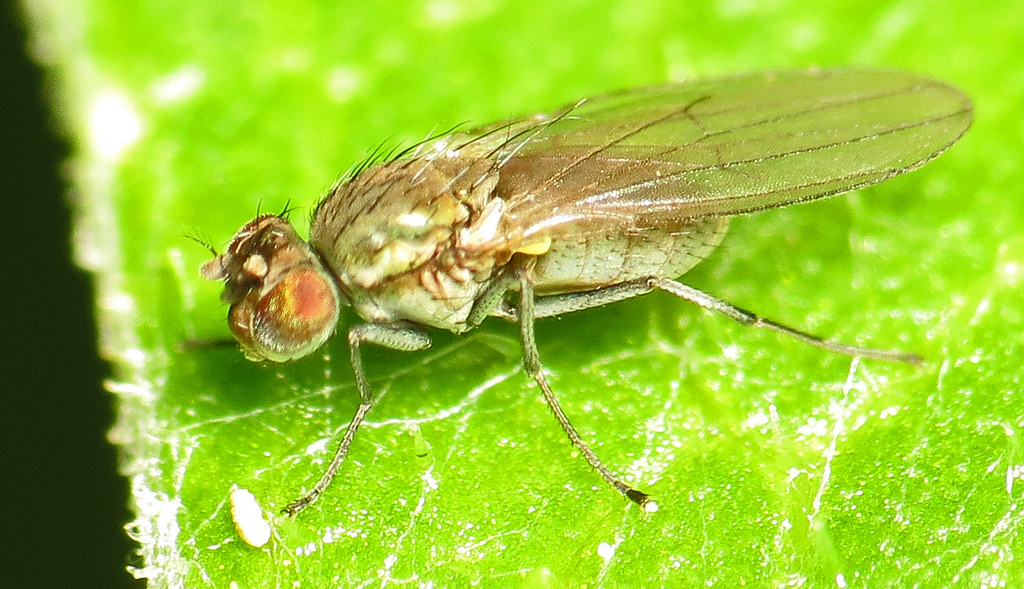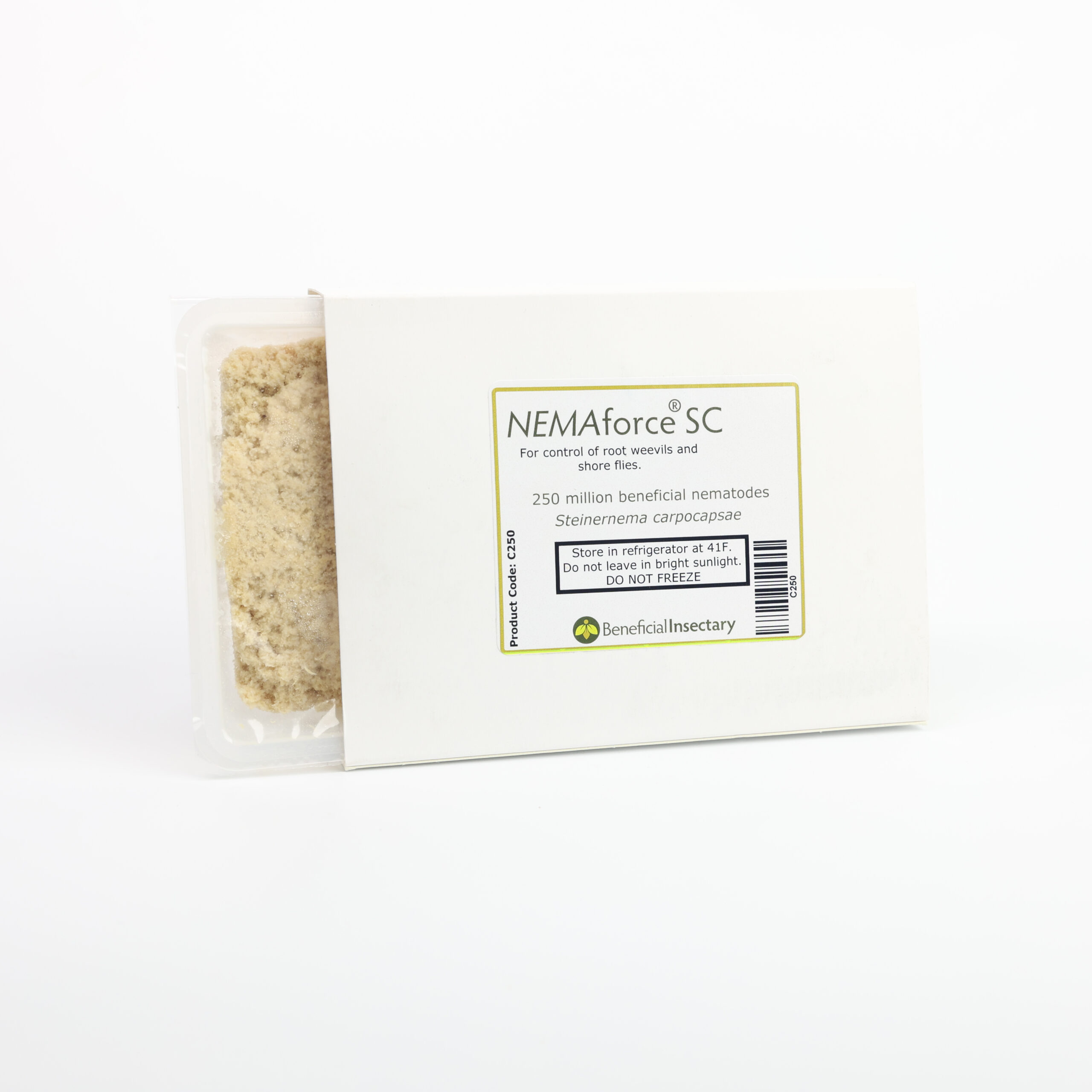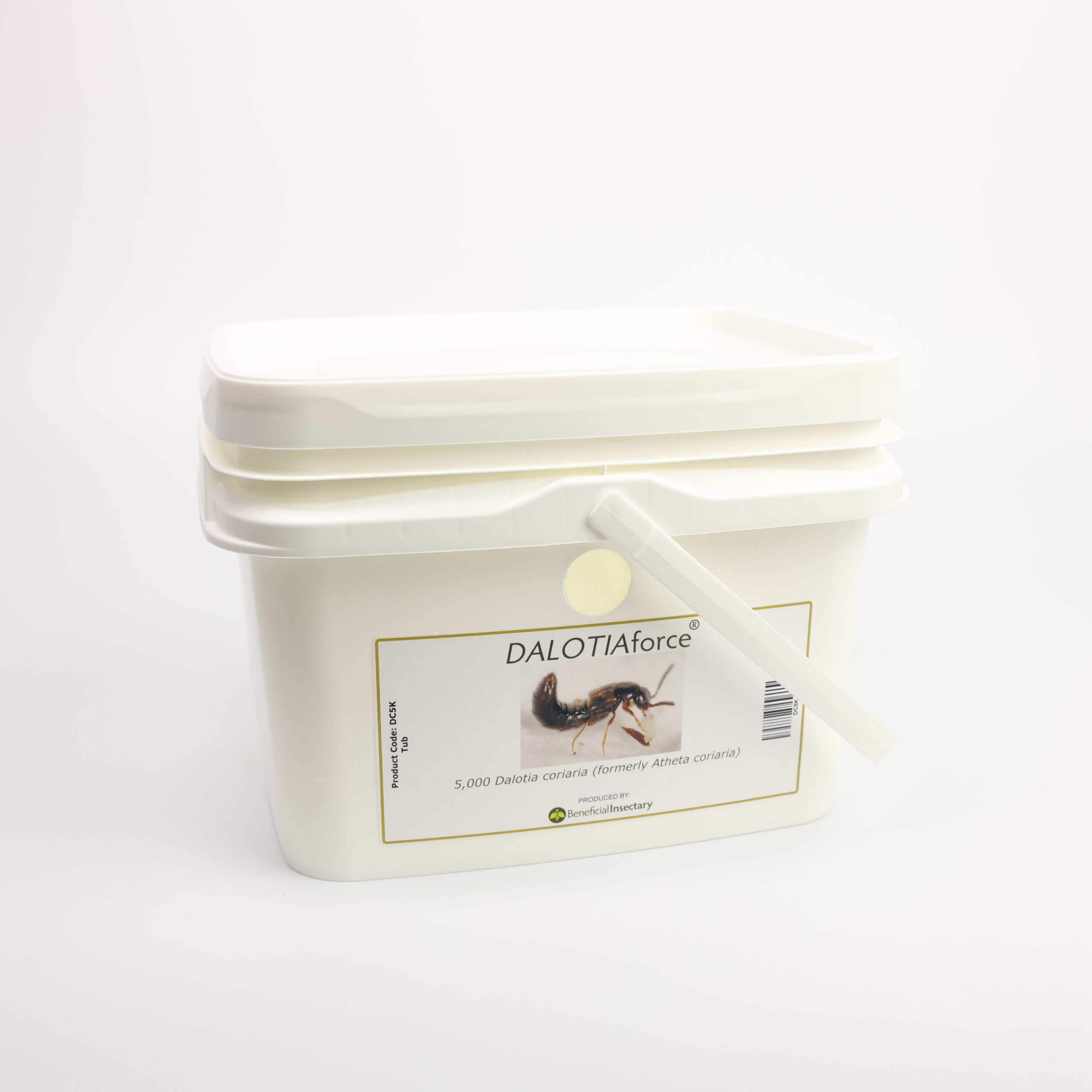SHORE FLY CONTROL
Shore Flies
Beneficial Insectary mass-rears biological pest control agents that explicitly address the natural management of Shore Flies.
In their adult stage, shore flies (Scatella stagnalis) resemble miniature house flies.
They are common greenhouse pests and are often found near water and green algae.
The most critical characteristic to identify the adults is the five white spots on their dark wings.
Shore fly larvae have no legs or distinct head capsules, and the body is opaque yellow, white, or brown.
The larvae have a distinct characteristic – the two-forked breathing tube on the posterior end.
The pupae are about 2-3 mm long, brown, and have a forked air tube like the larval stage.
Like all flies, shore flies undergo complete metamorphosis. They have an egg stage, a larval stage (three instars), a pupal stage, and then they emerge as an adult.
Females lay 300-500 eggs in areas where algae accumulate, such as growing mediums, benches, and floors.
Larvae are found on surfaces or just under the top layer of the growing medium.
Development from an egg to an adult requires approximately four weeks, depending on temperature.
Shore flies have multiple generations per year.
Adults and larvae feed on microscopic algae, dinoflagellates, bacteria, cyanobacteria, and other unicellular organisms.
Shore flies are considered a nuisance pest because they leave frass deposits or flyspecks on plant leaves and can vector several soil-borne diseases, including black root rot.
Larvae acquire the disease by ingesting fungal spores when they feed, which are retained through pupation.
When the adult excretes onto plant leaves or the growing medium, it may contain viable fungal spores.
Monitor adult fungus gnats using yellow sticky cards placed just above the soil level.
Note that sticky cards are only for monitoring. You will not trap and kill enough of them to attain control.
The larvae require water and accumulated algae to survive.
They tend to be found in the highest numbers in propagation houses and other humid/moist environments.
Because of their moisture requirements, cultural controls such as keeping the potting media as dry as possible, good sanitation practices, and cleaning up algae helps keep their numbers down.
It’s best to prevent them from becoming established in the crop by using some combination of (NEMAforce ™ SF), Steinernema feltiae, (NEMAforce ™ SC), Steinernema carpocapsae, or (DALOTIAforce ™), Dalotia.
If shore flies are found, use (NEMAforce ™ SF), Steinernema feltiae, (NEMAforce ™ SC), Steinernema carpocapsae as a knockdown for hotspots.
Dalotia (DALOTIAforce ™) are very persistent in the soil and work well for shore fly prevention.

NATURAL SOLUTIONS
Products We Offer

NEMAforce™ SC
NEMAforce™ SC (Steinernema carpocapsae) is the product of choice when your problems concern shore flies (Scatella stagnalis), flea larvae & pupae, billbugs, cutworms, sod webworms, strawberry root weevil, black vine weevil, and many others.

DALOTIAforce™
The aggressive rove beetle (Dalotia coriaria) is the perfect choice for long-term aggressive control of various soil-dwelling, soil-borne pests.
